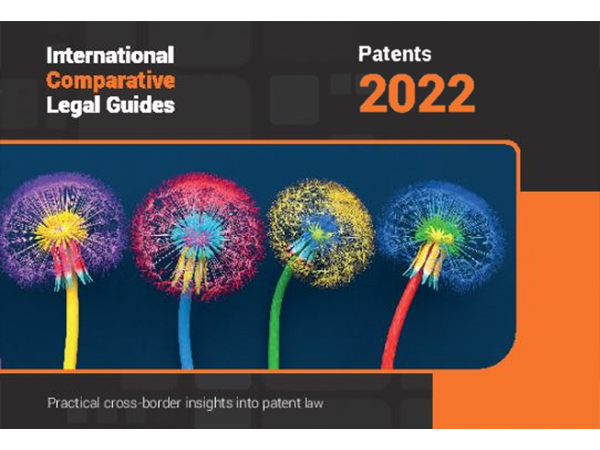
Intellectual Property
Viewpoints
Filter by:
Intellectual Property for the Metaverse
May 24, 2023 | Blog | By Frank Gerratana, Amritaa Ganguly
As metaverse-related technology and branding initiatives continue to grow, innovators in the space may need to pursue IP protection. Mintz Member Frank Gerratana and Associate Amritaa Ganguly discuss the use of patents, trademarks, and copyrights to protect innovations and creative activity associated with this new virtual world.
Nothing for free – the real costs of ChatGPT
May 11, 2023 | Blog | By Michael Renaud, Marguerite McConihe, Nana Liu
Making Bacon Still Requires a Significant Contribution for Joint Inventorship
May 10, 2023 | Blog | By Peter Cuomo, Hannah Edge
Benefits and Legal Risks of Embracing Generative AI Applications
April 5, 2023 | Blog | By Jeremy Glaser, Lorena Niebla
Generative artificial intelligence creates content and work efficiencies but also comes with legal pitfalls. Mintz Venture Capital & Emerging Companies Practice Co-chair Jeremy Glaser and Associate Lorena Niebla look at the technology's potential uses as well as risks related to data privacy, intellectual property, and more.
I Spy a Trade Secret: Conducting Proper Trade Secret Asset Management Review to Avoid Sufficiency Failure in Litigation
April 5, 2023 | Blog | By Nicholas Armington , Michael Renaud, Jonathan Engler
Successful defense of trade secrets in litigation begins with evaluating valuable confidential information and steps taken to safeguard it before any disputes arise. Trade secret asset management allows companies to effectively frame misappropriation or theft claims and advance arguments at every stage of a trade secrets dispute.
Federal Circuit Affirms Delisting of REMS System Patent from FDA Orange Book
March 6, 2023 | Blog | By Peter Cuomo, Adam Samansky, Peter McFadden
On February 24, 2023, the U.S. Court of Appeals for the Federal Circuit, in Jazz Pharmaceuticals, Inc., v. Avadel CNS Pharmaceuticals, LLC, Case No. 23-1186, affirmed a decision from the District Court of Delaware directing Jazz Pharmaceuticals, Inc. (“Jazz”) to delist U.S. Patent No. 8,731,963 (the “’963 patent”) from the FDA’s Approved Drug Products with Therapeutic Equivalence Evaluations publication (the “Orange Book”). The district court held, and the Federal Circuit affirmed, that the ’963 patent, which covers Risk Evaluation and Mitigation Strategies (“REMS”) for the narcolepsy drug Xyrem®, failed to claim a drug or method of use, and was thus improperly listed.
Avoiding Pitfalls: IP “Dos and Don’ts” for High-Tech Start Ups
February 27, 2023 | Blog | By Daniel Weinger, Frank Gerratana, Greg Penoyer
Starting a high-tech company is a difficult, exhausting, and thrilling endeavor – one in which founders will face seemingly endless challenges, deadlines, and make or break decisions. From a venture’s inception, founders face numerous decisions that if not thoughtfully considered can result in significant legal and financial risk.
Lensa: Are AI Art Generators Copyright Infringers?
February 15, 2023 | Blog | By Frank Gerratana, Michael Graif , Sebastian Navarro
Artificial Intelligence (AI) is now at our fingertips. No longer a concept hidden behind the walls of Big Tech and academia, AI programs are now available and accessible to everyone. Generative AI tools like ChatGPT have made headlines for its human-like conversation and writing, and Lensa has done the same for its ability to create original works of art.
Federal Circuit Resolves District Court Split, Holds Foreign Defendant Cannot Defeat Rule 4(k)(2) Personal Jurisdiction by Unilateral Post-suit Consent to Jurisdiction in Alternative Forum
January 23, 2023 | Blog | By Joe Rutkowski, Adam Samansky, Peter Cuomo
On January 9, 2023, the U.S. Court of Appeals for the Federal Circuit in In re Stingray IP Solutions, LLC, No. 23-102 granted a writ of mandamus, vacating a decision of the Eastern District Court of Texas which had transferred a patent infringement suit filed against foreign defendants to the Central District of California based on defendants’ post-suit consent to jurisdiction there.
The New European Patent System: Unitary Patents & Unified Patent Court
January 18, 2023 | Webinar | By Pedro Suarez, Michael Van Loy
The new Unified Patent Court (UPC) and the Unitary Patent (UP) system are scheduled to kick off on June 1, 2023, with the Sunrise Period for requesting “opt outs” beginning March 1, 2023.
Year in Review: The Most Popular IP Posts of 2022
January 5, 2023 | Blog | By Christina Sperry
Innovators developing IP strategies for 2023 are reflecting on last year’s key IP issues, including entity size designations for US patent applications, erasures of patent damage awards due to flawed expert opinions, and developments involving the ITC, artificial intelligence and machine learning, and inter partes reviews.
The Prevailing Winds of Public Interest: Tailoring Injunctive Relief in Patent Litigation Through Carve Outs
December 7, 2022 | Blog | By Andrew DeVoogd, Gabriella Flick, Serge Subach
Grants of permanent injunctions in U.S. district court patent litigation remain uncommon since the landmark decision in eBay v. MercExchange. LexMachina’s 2021 Patent Litigation Report highlights that courts grant fewer than fifteen permanent injunctions annually in the U.S. One such injunction was recently granted in Siemens Gamesa Renewable Energy A/S, v. General Electric Co. (“Siemens”) by the District of Massachusetts. That case is notable not only because it granted an injunction, but also because it took a novel approach to balancing public interest in doing so. Specifically, the public interest considerations implicated public green energy projects. In view of the Inflation Reduction Act (“IRA”), which was signed into law and provides incentives to combat climate change by investing in technologies such as solar and wind energy, such public interest considerations may become more common.
Apple’s Hold-out Strategy Nears End & Appears to Backfire in UK
November 9, 2022 | Blog | By Michael Renaud, Daniel Weinger, James Thomson
The UK has again demonstrated the ongoing trend against hold-out, approving an order forcing Apple to commit to take a license on FRAND terms, to be determined by the court, or face an injunction. This ruling is the latest in a line of decisions favorable to SEP holders across Europe and the United States that seem to be retilting SEP licensing towards more balance between innovators (patent owners) and implementers (alleged infringers). While there is more progress to be made, and the recognition of hold-out as a real problem continues to gain traction, this new UK decision reinforces basic principles of patent law: injunctions for SEPs are a real possibility.
Artificial Intelligence (AI) Takes a Role in USPTO Patent Searches
November 8, 2022 | Blog | By Christina Sperry
In 2021 the U.S. Patent and Trademark Office (USPTO) developed an Artificial Intelligence (AI) based prototype search system for use by examiners during examination of patent applications. The USPTO found searching success with the prototype, for the USPTO just launched an AI-based “Similarity Search” in the Patents End-to-End (PE2E) prior art search suite for patents examiners.
Eastern District of Texas Holds Willful Infringement Knowledge Requirement May Be Satisfied by Informing Non-Party of Infringement Claims Before Adding That Party as a Defendant
October 19, 2022 | Blog | By Adam Samansky, Peter Cuomo, Joe Rutkowski
On October 5, 2022, U.S. Magistrate Judge Roy S. Payne of the Eastern District of Texas recommended denying-in-part a motion for summary judgment of no willful infringement, holding that requisite knowledge of the asserted patent and alleged infringement of that patent could be satisfied by notice of the lawsuit before the moving defendant was added as a party.
An Emerging Split on the Applicability of the Inevitable Disclosure Doctrine Under the DTSA
October 10, 2022 | Blog | By Oliver Ennis, Nicholas Armington , Adam Samansky
Federal courts remain split on whether the Defend Trade Secrets Act (DTSA) allows for trade secret misappropriation claims brought under a theory of inevitable disclosure. Given this current patchwork of treatment of inevitable disclosure claims across the nation, owners of trade secrets and litigators of trade secret claims should continue to stay up to date on the treatment of this issue in the jurisdictions in which they practice.
Energy & Sustainability IP Updates — August 2022
August 8, 2022 | Article | By Brad M Scheller
Read about the USPTO’s commitment to becoming a technology partner to the World Intellectual Property Organization’s WIPO GREEN sustainability wing and its other initiatives to address climate change, plus recent IP litigation and patent developments.
Lost Profits – Who’s Sale is it Anyway?
August 1, 2022 | Blog | By Brad M Scheller , Robert Sweeney
Patent owners can recover lost profits when (1) there is a demand for a patented product, (2) an absence of acceptable non-infringing alternatives, (3) the patentee had the manufacturing and marketing capacity to exploit demand for the product, and (4) the patentee can establish the amount of profit it should have made but-for the accused product. Mentor Graphics Corp. v. EVE-USA, Inc., 851 F.3d 1275, 1285 (Fed. Cir. 2017) (reciting the Panduit factors). An implicit threshold requirement of this legal framework is actually being the entity that earns profits on the patented product.
Judge Albright Holds Willful Infringement Pleading Does Not Require Allegations of Egregious Infringing Behavior
July 22, 2022 | Blog | By Adam Samansky, Peter Cuomo, Joe Rutkowski
On July 12, 2022, U.S. District Judge Alan D. Albright of the Western District of Texas denied alleged infringer Lenovo’s motion to dismiss ACQIS’s willful and indirect infringement and enhanced damages claims, holding that patent owners need not allege egregious infringing behavior to assert a claim of willful infringement.
Rule 11—Use It Wisely
July 20, 2022 | Blog | By Brad M Scheller , Robert Sweeney
The power of Rule 11 – as with any weapon – must be employed diligently and with good judgment, as recently reiterated by the Northern District of Ohio.
Explore Other Viewpoints:
- Data Centers & Digital Infrastructure
- AI: The Washington Report
- Antitrust and Federal Regulation
- Appellate
- Arbitration, Mediation & Alternate Dispute Resolution
- Artificial Intelligence
- Awards
- Bankruptcy & Restructuring
- California Land Use
- Cannabis
- Class Action
- Complex Commercial Litigation
- Construction
- Consumer Product Safety
- Corporate Governance (ESG)
- Cross-Border Asset Recovery
- DEI Legal Developments
- Debt Financing
- Direct Investing (M&A)
- Diversity
- EB-5 Financing
- Education & Nonprofits
- Employment
- EnforceMintz
- Environmental (ESG)
- Environmental Enforcement Defense
- Environmental Law
- Environmental, Social, and Corporate Governance (ESG)
- FDA Regulatory
- False Claims Act
- Federal Circuit Appeals
- Financial Institution Litigation
- Government Law
- Growth Equity
- Health Care
- Health Care Compliance, Fraud and Abuse, & Regulatory Counseling
- Health Care Enforcement & Investigations
- Health Care Transactions
- Health Information Privacy & Security
- IP Due Diligence
- IPRs & Other Post Grant Proceedings
- Immigration
- Impacts of a New US Administration
- Insolvency & Creditor Rights Litigation
- Institutional Investor Class Action Recovery
- Insurance & Financial Services
- Insurance Consulting & Risk Management
- Insurance and Reinsurance Problem-Solving & Dispute Resolution
- Intellectual Property
- Investment Funds
- Israel
- Licensing & Technology Transactions
- Life Sciences
- Litigation & Investigations
- M&A Litigation
- ML Strategies
- Managed Care
- Medicare, Medicaid and Commercial Coverage & Reimbursement
- Mergers & Acquisitions
- Patent Litigation
- Patent Prosecution & Strategic Counseling
- Pharmacy Benefits and PBM Contracting
- Portfolio Companies
- Privacy & Cybersecurity
- Private Client
- Private Equity
- Pro Bono
- Probate & Fiduciary Litigation
- Products Liability & Complex Tort
- Projects & Infrastructure
- Public Finance
- Real Estate Litigation
- Real Estate Transactions
- Real Estate, Construction & Infrastructure
- Retail & Consumer Products
- Securities & Capital Markets
- Securities Litigation
- Social (ESG)
- Special Purpose Acquisition Company (SPACs)
- Sports & Entertainment
- State Attorneys General
- Strategic IP Monetization & Licensing
- Sustainable Energy & Infrastructure
- Tax
- Technology
- Technology, Communications & Media
- Technology, Communications & Media Litigation
- Trade Secrets
- Trademark & Copyright
- Trademark Litigation
- Unified Patent Court (UPC)
- Value-Based Care
- Venture Capital & Emerging Companies
- White Collar Defense & Government Investigations
- Women's Health and Technology








